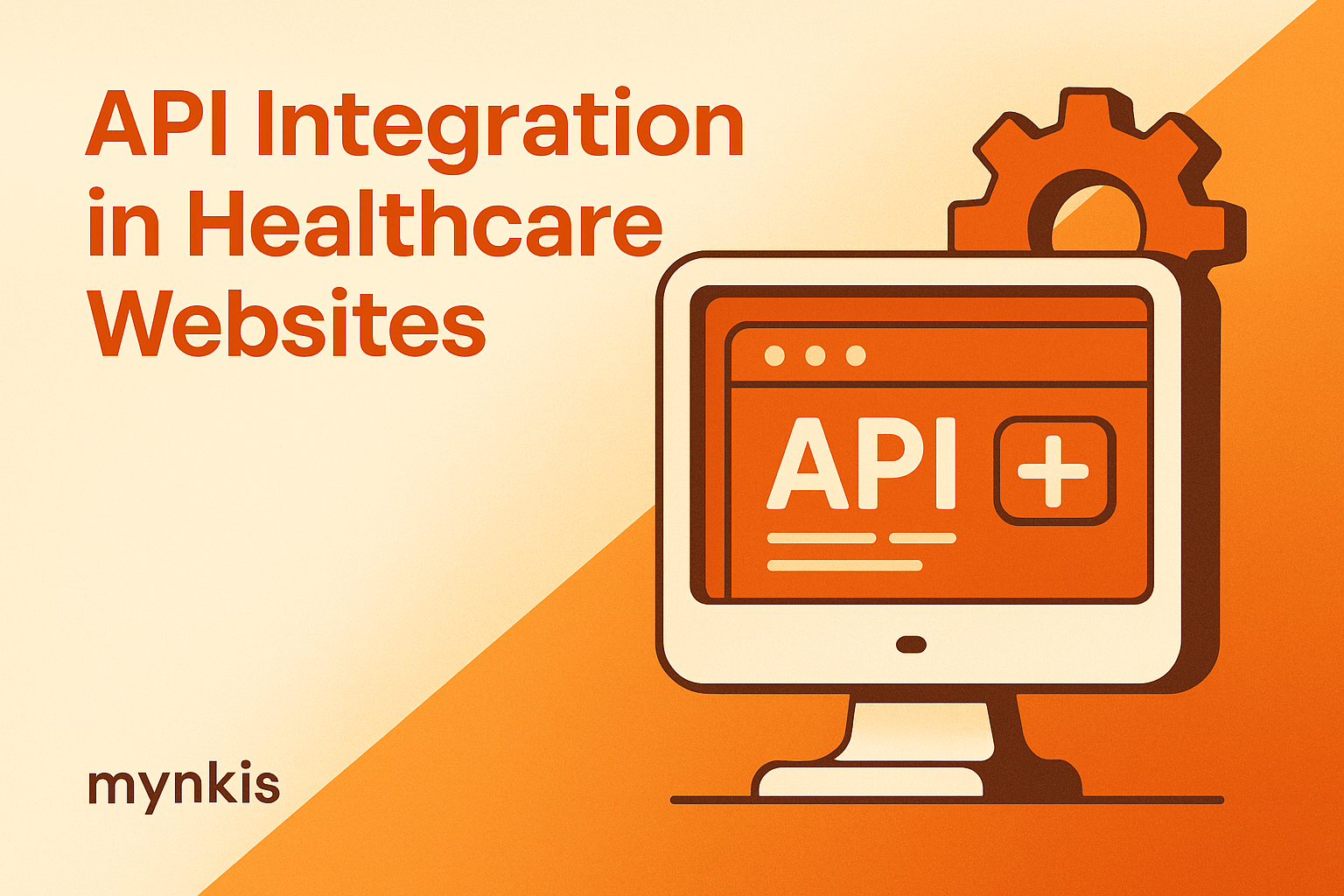Schedule a Demo
Think of the last time you visited a healthcare provider's website. Was it easy to schedule an appointment? Did you get instant feedback on your query? A smooth, efficient experience often hinges on something you might never see: API integration.
APIs—or Application Programming Interfaces—are the invisible heroes behind the functionality of modern medical websites. They allow different systems to talk to each other, pulling data from electronic health records, scheduling systems, and more, right onto your screen. It’s not just about convenience; it’s about comprehensive care.
As a medical professional in the digital age, you're not just dealing with bandages and stethoscopes anymore. Your clinic's digital footprint is as important as the care you provide. API integration means your website can pull the latest patient data from a variety of sources, enabling real-time updates on a patient portal or the ability to schedule appointments across different systems without manual entry.
In my work with healthcare managers, I've seen how a well-integrated API can drastically cut down administrative time. Here, accuracy and speed are just as vital as they are in the treatment room. Plus, by ensuring your systems work seamlessly together, you uphold those standards of data integrity and security that your clinic thrives on.
When dealing with patient information, security can't be an afterthought. APIs play a crucial role in establishing secure pathways between systems. When you integrate your website with systems holding sensitive health data, the use of APIs helps in maintaining HIPAA compliance by shielding patient records with rigorous security protocols.
I’ve been impressed by how the Office of the National Coordinator for Health IT (ONC) guides practices in creating policies that promote secure data interchange. Citing HealthIT.gov resources can offer your team best practices on ensuring data integrity.
Every healthcare provider aims to provide exceptional patient care, and that now extends to the digital realm. API integration facilitates patient portals where individuals can access their health records, request appointments, and even receive custom health advice powered by AI. When patients interact with your clinic’s website, the efficiency of API-powered systems can turn what could be a frustrating experience into a seamless one.
Based on available research, API integration enhances user engagement; individual results, of course, may vary. What's undeniable is the personalized touch patients enjoy—being able to see their labs online or syncing fitness data with their electronic health records (EHRs). Isn’t that what quality patient care is all about?
The world of healthcare software can feel like navigating a maze sometimes. But the use of APIs in website development simplifies this complexity. By having your website's backend communicating with a myriad of hospital systems—EHRs, lab results interfaces, billing systems—it becomes a central hub of clinic efficiency.
It's not just about using technology; it’s about using it smartly. I've seen countless times how an integrated system can mean the difference between a service that’s 'just ok' and one that’s so smooth, patients leave wondering how all of it worked so perfectly.
Let's talk dollars. Investing in API integration can seem like a considerable cost upfront, but consider the efficiency dividends it pays back. Automating processes like appointment scheduling reduces time spent on the phone, thus reducing staffing costs and increasing productivity.
According to an analysis by McKinsey, effective API strategies can lead to a return on investment of up to 10 times over the long haul. Additionally, seamless integration helps in complying with regulations like the 21st Century Cures Act, potentially avoiding hefty fines for non-compliance. When considered through a financial lens, the clarity of benefits from API integration comes into sharp focus.
Yesterday’s cutting-edge technology is today’s obsolete hardware. The beauty of APIs lies in their ability to be updated and changed without major upheavals to the systems they connect. A well-designed API strategy ensures that your clinic’s digital services aren’t just up to date—they're ready for whatever tomorrow brings.
I often work with clinic managers preparing their digital strategies and can say with confidence that those who leverage APIs enjoy a level of adaptability that's the envy of healthcare systems operating with more rigid technological frameworks. Look at it as setting the digital foundation of your clinic, sturdy enough to evolve and adapt for decades.
Tech-savvy innovation, while captivating, can feel very impersonal. Healthcare's heart lies in personal care, and well-integrated APIs enhance this connection. Picture a patient logging into your clinic's portal where all their critical data points are already interfaced—making every interaction more personal and informed.
Yet, in making these choices about digital investment, transparency is key. Be honest with your patients about how their data is used and stored. By doing this, trust is fostered—not just through the fluidity of new digital tools but also through the human-to-human connection that remains at the core of healthcare.
So, how can your healthcare website harness the power of API integration? Start by assessing what needs integration. Are your scheduling and EHR systems separate? Does your patient portal need updated patient info?
The next step is to find the right developers or platform who specialize in healthcare compliance and can tailor the integrations to match your clinic’s needs. Taking a phased approach ensures that every integration adds value—enhancing efficiency without overwhelming staff with too much at once.
Take advantage of industry resources like the American Medical Association or specific tools promoted by entities such as Mayo Clinic for further guidance.
